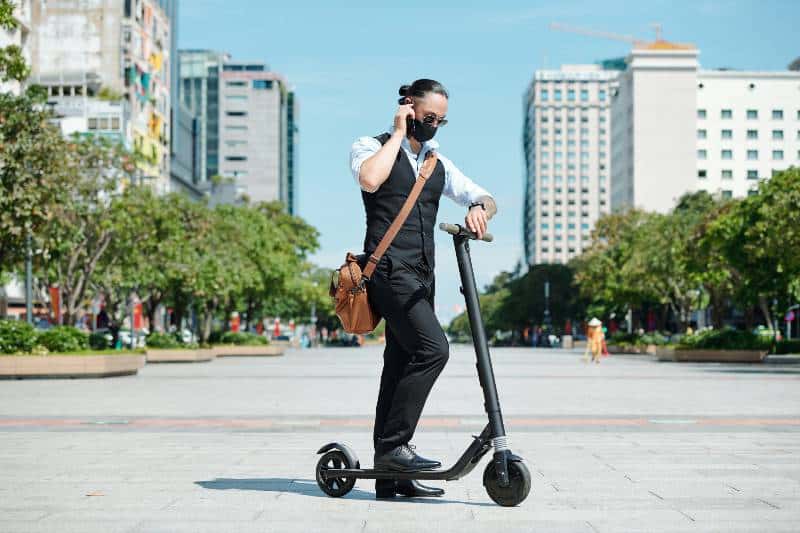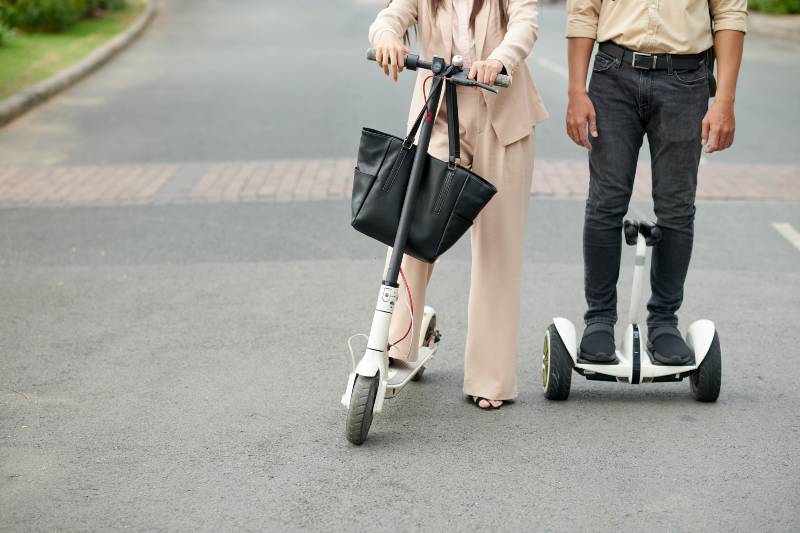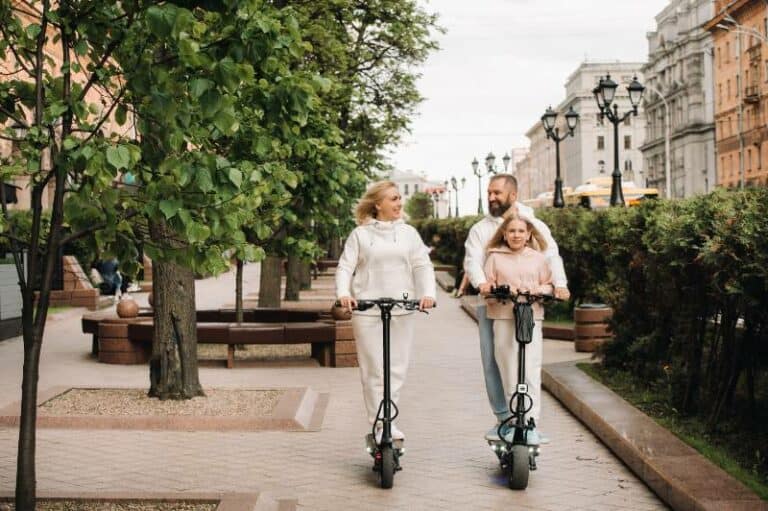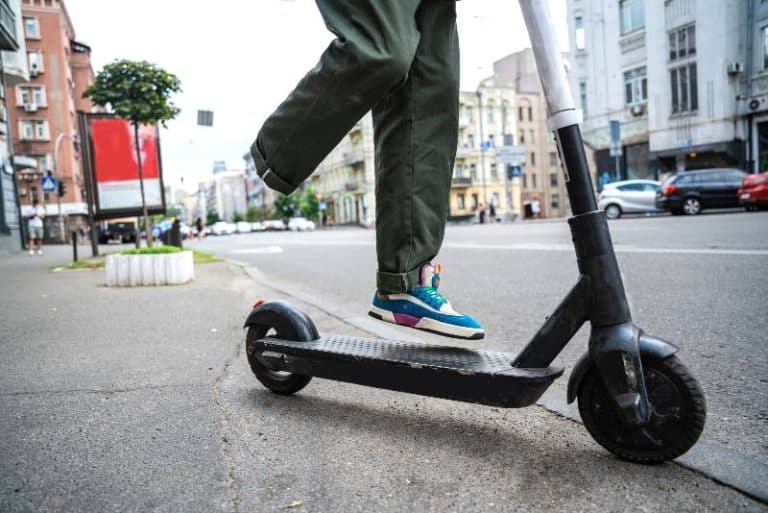Safe and Fun Places to Ride Electric Scooters in Your City
Electric scooters are all the rage right now. It seems like every city has them, and people can’t get enough of them. If you’re looking for a fun way to get around town, electric scooters are definitely the way to go! In this blog post, we will discuss where you can (and should not) ride electric scooters.
Every state in the United States has its own set of laws and regulations. While there are some general similarities, each state also has its own unique quirks.
Key Takeaways
- Electric scooters are allowed for street use in 38 U.S. states, while ten states have banned them.
- Despite the fact that electric scooters are permitted to ride on public roadways in the majority of states, some local governments have passed a variety of laws governing their use.
- Due to the fact that most scooters cannot reach safe speeds to keep up with traffic, states such as California, Colorado, Massachusetts, and New York forbid the use of scooters on highways, expressways, and roads with limited access.

Where can I ride my electric scooter?
With the proliferation of electric scooters and electric bikes in recent years, many states have been grappling with how to regulate their use. Currently, only a few states allow scooters on sidewalks. The remaining states have either banned sidewalk riding outright or have not addressed the issue in their legislation. The reasoning behind these bans is that scooters can reach speeds of up to 15 miles per hour, making them potentially dangerous to pedestrians and other sidewalk users.
Riding Electric Scooters On the Street
As electric scooters have become increasingly popular in recent years, there has been some debate over where they should be allowed to operate. Under the HR 727 amendment to the Consumer Product Safety Act, “low-speed bicycles” are defined as “two- or three-wheeled vehicles with fully capable of operating pedals and an electric engine of fewer than 750 watts, whose top speed on a paved level surface, when fueled solely by such an electric motor while ridden by a driver weighing 170 pounds, is less than 20 mph.”
Although no comparable rule exists for electric scooters, it is commonly considered that they fall into this group. As a result, E-scooters are permitted on roads with or without bicycle lanes so long as they do not exceed 25 mph.
Riders must maintain tight proximity to the curb and adhere to driving and traffic regulations, such as driving on the right side of the road, obeying traffic lights, and yielding to pedestrians. While this may seem like a lot of restrictions, it ultimately helps to ensure the safety of both scooter riders and other roadway users.
The Cons of Riding on The Street
The e-scooter boom has been a boon for many people. It’s allowed them to get around town in new and exciting ways. But there are also some downsides to riding e-scooters on the street, including safety concerns, legal issues, and increased traffic congestion.
Safety Concerns
Riding an e-scooter is not as safe as riding a bike or walking. This is because e-scooters are less stable than bikes and don’t provide as much protection from the elements. People who ride e-scooters on the street may be at higher risk for injury if they fall off or collide with other vehicles or pedestrians.
Legal Issues
Riding an e-scooter on the street can be illegal depending on where you live and what type of license you have.
Riding Electric Scooters Bike Lanes or Paths
Humming along at 15 miles per hour, you spot an empty bike lane and make a beeline for it. After all, you reason, e-scooters are just like bikes, so they must be allowed in bike lanes, right? Unfortunately, that assumption would be incorrect in many states.
In fact, laws regarding e-scooters vary widely from state to state, with some states prohibiting them from being used in bike lanes entirely. The rationale behind these laws is that e-scooters can travel much faster than bikes, making them a hazard to both cyclists and pedestrians.
As a result, many states have decided to ban e-scooters from bike lanes altogether. However, other states have taken a different approach, instead allowing e-scooters in bike lanes but imposing speed limits. So whether or not you can use an e-scooter in a bike lane depends entirely on where you are in the United States.
The Cons of Riding on Bike Lanes or Paths
If you’re riding a bike, the last thing you want to do is get involved in an accident. In fact, even if you’re just out for a leisurely ride, it’s important to stay safe by adhering to traffic laws and making smart decisions on the road.
There are many benefits to riding your bike, including better health and environmental benefits. However, there are also some drawbacks to biking — including safety concerns. Here are three cons to riding on bike lanes or paths:
Pedestrians can be unpredictable
While pedestrians have the right of way in crosswalks and intersections, they may not always follow that rule. Pedestrians may also walk in the middle of roads when there aren’t sidewalks available for them to use. This can put cyclists at risk of collision when they ride past pedestrians who aren’t paying attention or look like they might step into traffic at any second.
Cyclists must watch out for cars entering or exiting driveways
Car doors can open unexpectedly when cyclists pass by parked cars on the side of roads or in driveways. This could cause serious injury if a cyclist hits an open door while riding down the road at high speeds.
Riding Electric Scooters On Sidewalks
Before you begin riding your e-scooter you should check your local laws to see if they allow it or not. If they don’t allow it then you need to follow those laws and find another place to ride your scooter like in a park or parking lot. If they do allow it then make sure that you are following all of their rules and regulations when riding on the sidewalk or elsewhere where motor vehicles aren’t allowed.
The Cons of Riding on The Sidewalks
The most common complaint about e-scooters is that they can be dangerous for pedestrians. They’re often ridden on sidewalks instead of streets and can be hard to see as they whiz by.
Here are some cons of riding e-scooters on the sidewalk:
Safety concerns for pedestrians and cyclists
Pedestrians have complained that riders weave through crowds at high speeds, creating a safety hazard for everyone else using the sidewalk or pathway. Many riders also don’t obey traffic signals and ride against traffic, which can lead to serious issues when they’re crossing streets without sidewalks or lights.
Littering problem
Riders who don’t park their e-scooters properly may leave them on walkways or in places where they could obstruct pedestrian traffic or block access to buildings and businesses (such as restaurants).
Riding Electric Scooters On Dirt Roads
Not all electric scooters are created equal. While some models are designed for paved roads, others are built to handle rougher terrain. If you’re planning on riding your electric scooter on dirt roads, it’s important to choose a model that can handle the workload. Look for an electric scooter with wide tires and good suspension. These features will help to ensure a smooth ride, even on bumpy surfaces. In addition, make sure to choose an electric scooter with a powerful motor. This will give you the extra power you need to safely navigate dirt roads. With a little research, you can find the perfect electric scooter for your needs.
The Cons of Riding on Dirt Roads
While riding on a dirt road may seem like a good idea at first, there are some drawbacks to consider.
It can be more dangerous than riding on the streets.
Riding an electric scooter on a dirt road can be dangerous in many ways. First of all, dirt roads are often much bumpier than paved roads and this can cause your scooter to shake around more than usual. This can make it difficult for you to control your scooter and make it feel like you’re going faster than you actually are. In addition, riding on dirt roads is likely to cause your scooter’s tires to pick up rocks and other debris which could then get lodged inside of them, causing flat tires or other problems that could lead to a crash while riding off-road.
Sand and Dirt Get Everywhere
One of the biggest reasons why people don’t like riding on dirt roads is that they can get very dirty. The wheels on an electric scooter will kick up a lot of sand and dust as you ride, which can get all over your clothes, helmet, and face shield. You’ll need to clean yourself off after every ride if you want to avoid looking like a mess when you arrive at your destination.
The Cons of Riding on The Sidewalks
But with so many people using them, there’s bound to be some problems. Here are three of the biggest cons of using scooters on sidewalks:
The Cons of Riding on the Sidewalks
It makes sidewalks more crowded than ever before.
When you’re walking down the street and someone comes up behind you on a scooter, they might be coming up too close to you because there isn’t enough room on the sidewalk for both of you to fit in at once without bumping into each other. This can make pedestrians feel uncomfortable and even unsafe as they try to navigate around scooters.
Scooters can be a trip hazard.
If you’re not paying attention, it’s easy to trip over an electric scooter that’s been left on the sidewalk. This is especially true at night when it’s harder to see them.
The legality of Electric Scooters Across Cities and States
In 38 U.S. states, electric scooters are lawful for street use, while ten states have considered them illegal. Despite the fact that electric scooters are street-legal in the majority of states, certain jurisdictions have enacted varying regulations regarding their operation on public roads.
California, Colorado, Massachusetts, and New York prohibit the use of scooters on motorways, expressways, and limited-access roads since most scooters cannot reach safe speeds to keep up with traffic.
The states of Massachusetts, Connecticut, Indiana, Maine, and Virginia have stipulated that while scooters are street-legal, they must be ridden on the right side of the road.
States that allow electric scooters on public roads
Alabama
In order to legally ride an e-scooter, you need a Class M license. Applicants must be at least 14 years old to be eligible to apply for this license. Alabama law prohibits riders under 14 from operating e-scooters.
Alaska
In Alaska, an e-bike is a “motor-powered bicycle.” E-bikes are not subject to the same road regulations as ordinary bicycles because they are motorized. E-bike riders are required to hold a valid operator’s license. There are no registration or insurance requirements for e-bikes.
Arizona
A valid driver’s license, insurance, and registration are required, but not a title, for electric bicycles, scooters, or mopeds with a top speed of no more than 25 mph and a helper motor of 50cc or less. Any rider under the age of 18 who operates or rides a moped must wear a helmet at all times in Arizona.
Arkansas
In Arkansas, no individual shall operate an electric motorized scooter on a building-adjacent sidewalk where the such operation would endanger pedestrians or when such operation is banned by an official traffic control device.
California (excluding expressways and highways).
The state of California does not allow electric scooters on expressways or highways. A person must be at least 16 years old and have a valid driver’s license to operate an electric scooter on a street, bikeway, or bicycle path.
Colorado (except interstate or limited-access roads)
A person must be at least 16 years old and have a valid driver’s license to operate an electric scooter on a street in Colorado. Electric scooters are not allowed on highways or limited-access roads.
Connecticut (must stay to the right)
In Connecticut, an electric scooter is defined as a “motor-driven cycle” and is subject to the same regulations as motorcycles. A person must be at least 16 years old and have a valid driver’s license to operate an electric scooter on a street. Electric scooters must be ridden on the right side of the road.
Georgia
In Georgia, electric scooters are classified as “low-speed vehicles.” A person must be at least 16 years old and have a valid driver’s license to operate an electric scooter on a street. These are prohibited on sidewalks, and riders under the age of 16 must wear helmets when riding them.
Hawaii
In Hawaii, electric scooters are classified as “motor-driven cycles.” A person must be at least 15 years old and have a valid driver’s license to operate an electric scooter on a street. Electric scooters are not allowed on sidewalks.
Illinois
In Illinois, Electric kick scooters can normally be ridden on public roadways, but local legislation may impose restrictions.
Indiana (must stay to the right)
In Indiana, You can ride scooters on the street and bike paths, and a license is required.
Iowa
In Iowa, Scooters are only permitted on roads with speed restrictions below 25 mph.
Kansas
In Kansas, electric scooters are classified as “low-speed vehicles.” A person must be at least 16 years old and have a valid driver’s license to operate an electric scooter on a street. It can only be operated on roads with a speed restriction of fewer than 25 miles per hour, walkways, and recreational trails and paths.
Louisiana
The state of Louisiana allowed electric scooters in 2019. The Louisiana DMV permits low-speed electric scooters to operate on sidewalks, bicycle paths, and streets with posted speed restrictions of 25 miles per hour or less. One may ride the scooter at a time.
Maine (must stay to the right)
People who use electric scooters must have front and rear lights, as safety is a priority in Maine. Wheel diameter must not exceed 16 inches, and a license is required for all riders. Electric scooters are allowed on sidewalks but must yield to pedestrians. Riders must stay to the right when possible.
Maryland
State law in Maryland governs e-scooters using the same code as regular bicycles. This means that e-scooters must be operated on public roads and in accordance with all traffic regulations.
Massachusetts (except interstate or limited-access roads; must stay to the right)
You must ride your scooter on the right side of the road at all times in Massachusetts, even when passing other vehicles. Be sure that your turn and stop signals are working properly before you start riding. You cannot legally operate a motorized scooter at night or in the early morning hours. All riders of motorized scooters are required to wear helmets while operating their vehicle.
Minnesota
Motorized foot scooters are now treated as bicycles under Minnesota’s new statute, allowing them to enjoy the same rights and obligations as cyclists. This means that motorized foot scooters can be driven on public roads and highways without requiring a driver’s license, registration, licensing, or insurance.
Mississippi
On-street usage of electric scooters in Mississippi is allowed in the same way as bicycles, although a driver’s license or other motorized vehicle papers are required for street use. No one under the age of 16 years old who is permitted to drive a car may ride an electric scooter. When using a standup electric scooter, no one shall go faster than 15 miles per hour.
Missouri
You are only allowed to drive your scooter on a roadway- driving on the highway is not permitted. Additionally, you must follow posted speed limits and be at least 18 years old with a Missouri driver’s license. Lastly, using sidewalks is prohibited.
Montana
Adult electric scooter riders are only allowed on the sidewalk and must always give pedestrians the right of way. If you need to pass an electric scooter, make sure to give a verbal warning first, and respect all traffic regulations while in Montana.
Nebraska
In the state of Nebraska, electric scooters are not required to be registered. In addition, the state has not adopted any specific regulation regarding electric scooters at this time. However, when riding these devices on public roads riders must still adhere to all traffic laws. Additionally, cycling is prohibited on sidewalks within the state.
Nevada
Scooters in Nevada must weigh less than 100 pounds without a rider and cannot exceed a max speed of 20 miles per hour. Riders must be at least 16 years old.
The state of New Mexico
A moped operator on a New Mexico highway must have a valid driver’s license or permit.
New York City
The maximum speed limit for e-scooters is 15 mph. E-scooters in NYC may be ridden in bike lanes and roads with a 30 mph speed limit or below.
State of North Carolina
A valid license is required to operate a motor vehicle on a North Carolina street or highway.
The state of North Dakota
In North Dakota, electric scooter riders are not permitted to use sidewalks or bike paths.
Ohio
E-scooters may only be operated on bike paths on university campuses in Ohio.
Oklahoma
In order to operate a scooter on the roadway In Oklahoma, officials say users must have a valid driver’s license. Scooters cannot pass other vehicles between lanes of traffic; you also cannot swerve in between moving vehicles.
Pennsylvania
Electric scooters are not titled or registered in the state of Pennsylvania since they do not meet the requirements for motor vehicles’ equipment and inspection. They cannot be driven on roadways or streets in the state of Pennsylvania because they are electric scooters.
Rhode Island
In Rhode Island, electric scooters are only legal if you have a valid driver’s license or municipal ID. Scooters may be utilized on sidewalks and roadways, and riders are encouraged to exercise caution while riding. On the street, users must follow all traffic regulations and obey traffic laws.
Tennessee
In 2019, the Tennessee legislature extended laws that cover the operation of bicycles and e-bicycles to also include e-scooters.
Texas
You are allowed to ride electric scooters on public roads in Texas, but you don’t need a driver’s license. Presently, e-scooters are only authorized on streets with speed limits at or below 35 mph.
Utah
Utah has authorized e-Scooter usage on its roads, following the lead of several other states. Although these app-controlled scooters are permitted on Utah roadways, the state does not have specific regulations for electric scooters, and various Utah cities have varied, conflicting rules regarding electric scooters.
Vermont
The good news is that the State of Vermont does not have registration and licensing requirements for e-scooters. But be reminded that only persons under the age of 16 may operate a class 3 e-scooter. The same rules of the road apply to both electric bicycles and human-powered bicycles.
West Virginia
In West Virginia you should remember that e-scooters are permitted to be used however it’s not allowed on the sidewalks. Like the other states, West Virginia e-scooter riders must be at least under the age of 15.
In states where electric scooters are illegal on public streets
Oregon
It is illegal for anyone under the age of 16 to ride an e-scooter. You can ride your e-scooter on multi-use paths, city streets, or bike lanes in Portland, Oregon. However, you are not permitted to use them on sidewalks or crosswalks. When riding, you must yield to pedestrians who have the right of way. Unless a permit is produced, scooters are not permitted in public parks or designated motor vehicle parking areas preferably with bike racks.
Wisconsin
Riding a scooter on a sidewalk is strictly prohibited in Milwaukee, Wisconsin. Most have treated e-scooters similarly to bicycles, which must also follow traffic laws and pedestrian laws.
States where it is permitted to ride a scooter on a sidewalk
Arizona
The rules of electric bicycles or electric-assisted bicycles apply to electric scooters with top speeds less than 20mph and motor power less than 750 watts. Furthermore, the laws permit the use of such scooters wherever a bicycle is permitted.
Sidewalks; this means that e-scooters can be ridden on sidewalks in Arizona. However, they cannot be used on highways or in traffic lanes.
Bicycle lanes; they can be ridden on bicycle lanes. However, whether riding an e-scooter on a sidewalk or a bike lane, the scooter must only carry the rider.
Iowa
E-scooters are permitted to use roadways, bike lanes, and bike paths in Iowa. However, unless they are riding as a passenger, no one under the age of 16 can operate a class 3 electric bike.
Louisiana
Except when making a left turn, e-scooters may be operated on roadways as far to the right as is practical. Unless otherwise posted, e-scooters are permitted on riding paths. To ride a Class 3 e-scooters in Louisiana, you must be 12 years old or older, unless the e-scooter is designed to carry passengers.
Rhode Island
E-scooter riders (and even inexperienced riders) and regular bicycle riders typically share the same bike lanes, roadways, and bicycle paths. In the state of Rhode Island, e-bike riders are not required to have a special permit, license, or registration.
Virginia
Due to the rapid arrival of e-scooters, state legislators rushed to pass legislation regulating the devices. Virginia Gov. Ralph Northam signed a state bill outlining dockless e-device regulations in March, including a number of regulations that apply across the state:
- E-scooters can reach speeds of up to 20 miles per hour.
- E-scooters must weigh no more than 100 pounds.
- Riders must be 14 years old or older.
- Users of e-scooters are permitted to ride on sidewalks.
What does the future hold for electric scooter legality?
With the rise of electric scooters, cities are struggling to keep up with their legality and safety.
As more and more people turn to these scooters as a cheap and convenient way to get around, cities are struggling to keep up with legislation that would protect riders and pedestrians.
The majority of states have laws on the books that prohibit motorized vehicles on sidewalks or other pedestrian areas. However, as electric scooters have become more popular, many cities have issued temporary bans until they can create laws that properly regulate this new form of transportation.
Where to Park Your Electric Scooter
Electric scooters are a convenient way to get around town. They’re a fun way to get some exercise, too. And because they don’t require gas or insurance, they can save you money in the long run.
Wherever you park your electric scooter, it’s important to follow local rules and regulations. You should also always wear a helmet when riding an electric scooter.
Here are some tips for parking your electric scooter:
If you live in an apartment building, check with management about where you can park your vehicle. Some buildings have designated spots for electric scooters, while others don’t allow them on their property at all.
If there aren’t any designated parking areas for electric scooters near where you live, look for another place to store your vehicle when not in use. Many people choose their garage as a storage location because it keeps their vehicle safe from the elements and prevents theft when they aren’t using it — though many garages aren’t evenly heated or cooled throughout the year, so this isn’t always ideal
Where Not to Park
There are some places you just don’t want to park your electric scooter.
In fact, there are some places you might even get ticketed for parking your electric scooter.
Here’s a list of some places that you should avoid:
- In the middle of a sidewalk or crosswalk (this is illegal in most places)
- On top of another vehicle (especially if it’s parked legally)
- In front of an entrance or exit (unless there’s no other option)
- Anywhere that would block visibility for pedestrians or drivers

Where To Ride Electric Scooters FAQs
Are electric scooters legal on the road and pavement?
Despite the many people who use electric scooters, there is no nationwide law that legalizes or bans their use on the pavement. In some states, it is only legal to ride electric scooters on the road.
Can electric scooters go on dirt roads?
some electric scooters are made for dirt roads, but not all of them. You should check your electric scooter’s manual to see if it can go on dirt roads before taking it off-road.
Are scooters allowed on highways?
In most states, scooters are banned from being used on highways. However, it’s best to find out the particular laws and regulations applicable in your state before using a scooter on a highway. The reason for this ban is that scooters are not as stable as other vehicles, and they are more likely to tip over at high speeds. In addition, scooters lack features such as headlights and turn signals, which make it difficult for other drivers to see them.
Can you use an electric scooter on a public footpath?
No, you can’t. Electric scooters are not allowed on public footpaths in most states. This is because they can pose a danger to pedestrians, who have the right of way on these paths.
What makes an electric scooter street legal?
The US Federal Law specifies that an electric bicycle is street legal if it has a maximum speed of less than 20 mph and a motor power of less than 750W. The majority of U.S. states do not require registration or a license for vehicles inside this range.
Conclusion
Electric scooters are a fun and convenient way to get around town. However, it’s important to follow local rules and regulations when parking or riding your electric scooter. Be sure to wear a helmet, and knee pads and avoid parking in illegal or dangerous areas. With a little bit of planning, you can enjoy using your electric scooter worry-free!






